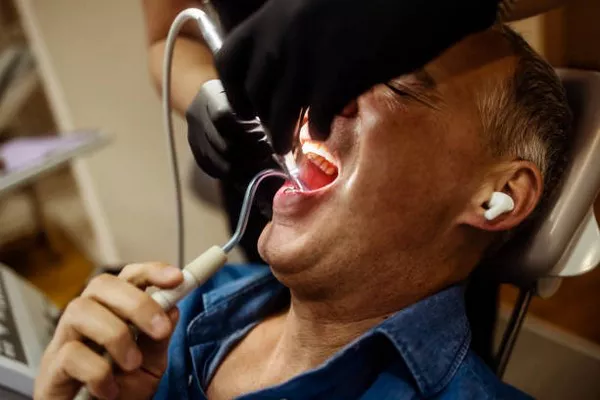Gingivitis is a common type of gum disease that can lead to more severe forms of periodontal disease if left untreated. It is characterized by inflammation and bleeding of the gums and can be caused by a variety of factors. In this article, we will explore the causes of gingivitis in detail, including bacterial plaque, poor oral hygiene, hormonal changes, medications, genetics, and other factors.
Bacterial Plaque:
Bacterial plaque is the primary cause of gingivitis. Plaque is a sticky film of bacteria that forms on teeth and gums after eating or drinking. When plaque is not properly removed through regular brushing and flossing, it can build up and cause inflammation of the gums.
Plaque contains harmful bacteria that release toxins that irritate the gums, causing them to become red, swollen, and tender. If left untreated, plaque can harden into tartar, which can only be removed by a dental professional.
Poor Oral Hygiene:
Poor oral hygiene can contribute to the buildup of plaque and the development of gingivitis. Failure to brush and floss regularly can allow plaque to accumulate and harden into tartar, which can irritate the gums and cause inflammation.
Additionally, using improper brushing and flossing techniques can also contribute to the development of gingivitis. Brushing too hard or using a toothbrush with bristles that are too stiff can damage the gums and cause bleeding.
Hormonal Changes:
Hormonal changes during puberty, pregnancy, and menopause can make gums more susceptible to gingivitis. The increase in hormones can cause blood vessels in the gums to dilate, making them more sensitive and prone to inflammation.
Pregnancy gingivitis is a common condition that affects many pregnant women. The hormonal changes during pregnancy can cause an increase in blood flow to the gums, making them more sensitive and prone to inflammation. This can lead to swelling, bleeding, and tenderness of the gums.
Medications:
Certain medications, such as anticonvulsants, calcium channel blockers, and immunosuppressants, can cause gingival overgrowth, a condition where the gums become enlarged and inflamed.
Gingival overgrowth can make it difficult to keep the gums clean, leading to an increased risk of developing gingivitis. If you are taking medication that may be contributing to gum disease, speak with your dentist or healthcare provider about alternative treatment options.
Genetics:
Some people may be more genetically predisposed to developing gingivitis than others. Genetic factors can affect the body’s immune response to bacterial plaque, leading to increased susceptibility to gum disease.
Prevention and Treatment of Gingivitis:
Preventing gingivitis requires proper oral hygiene habits. This includes brushing twice daily with fluoride toothpaste, flossing daily, and visiting your dentist regularly for cleanings and checkups. Additionally, avoiding tobacco use and eating a balanced diet can help to reduce the risk of developing gingivitis.
If gingivitis is detected early, it can be treated and even reversed through professional cleaning and improved oral hygiene practices. However, more advanced cases may require more intensive treatments such as scaling and root planing, antibiotics, or surgery.
Conclusion:
Gingivitis is a common type of gum disease that can be caused by a variety of factors, including bacterial plaque, poor oral hygiene, hormonal changes, medications, genetics, and other factors. The symptoms of gingivitis include red, swollen, or tender gums, bleeding during brushing or flossing, bad breath, receding gums, and changes in the way teeth fit together. Preventing gingivitis requires regular brushing and flossing, visiting the dentist regularly, avoiding tobacco, and maintaining a healthy diet. Early detection and treatment are crucial in preventing more severe forms of periodontal disease. If you suspect that you may have gingivitis, consult with a dental professional immediately for an evaluation and appropriate treatment.
Related Topics:
































